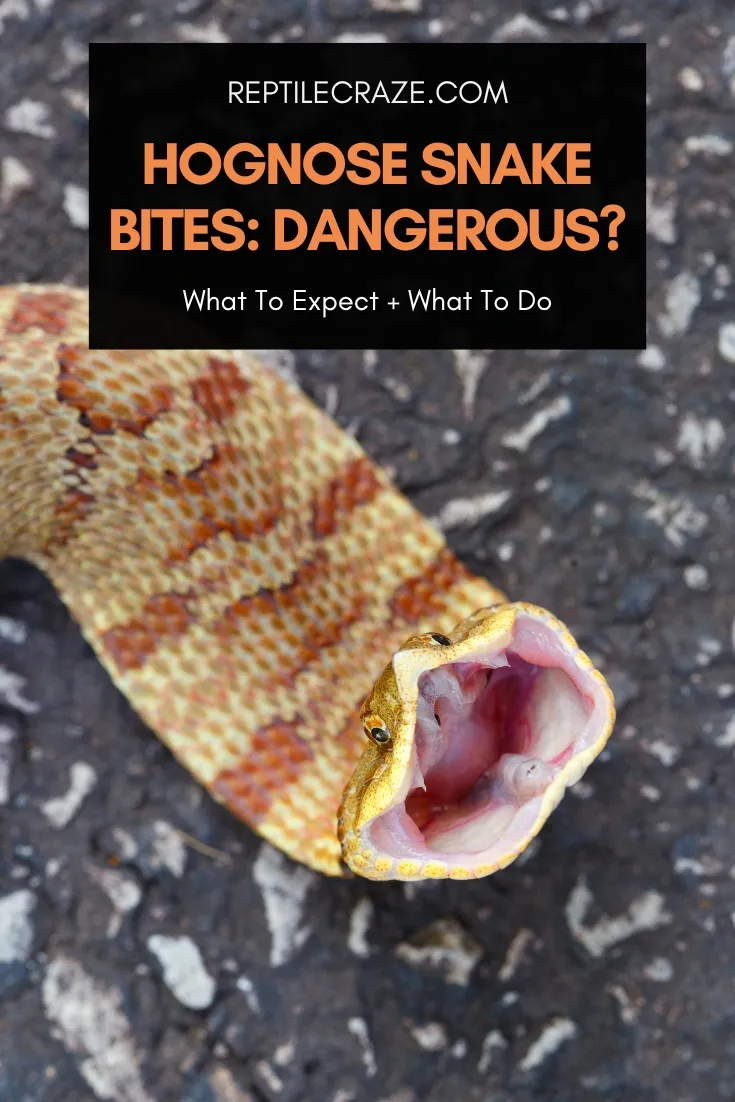
Hognose snakes have a fearsome reputation, but in reality, they are one of the most docile and mild-mannered reptiles around. These snakes only bite when they feel threatened – so it’s important to be aware of their behavior. But does a hognose snake bite hurt? And what should you do if one bites you?
Hognose snake bites are not known to be very painful – though they may cause a slight stinging sensation. They contain a mild venom that is used for subduing prey. So, if you are bitten by a Hognose Snake – clean the wound with soap and water, apply an antiseptic, and seek medical attention if needed.
If you want to learn more about hognose snake bites and how to handle them, then this article is perfect for you. We’ll take an in-depth look at the pain associated with a bite, potential symptoms, and what to do if you get bitten. So read on to know more about hognose snakes and their bites.
Table of Contents
Do Hognose Snake Bite?
Hognose snakes are not typically known for being aggressive or prone to biting. In fact, hognose snake bites are very rare. They usually occur only when a person does not respect the boundaries when handling these reptiles.
To minimize the chance of a Hognose Snake bite, it is important to learn about their behavior and their body language. Hognose snakes may hiss or spread its neck when feeling threatened. They are more likely to strike out if they feel cornered and have no escape route.
So, If your snake is exhibiting any of these behaviors, it is important to put the animal down in a safe area away from you and other people.
Nature of Hognose Snakes
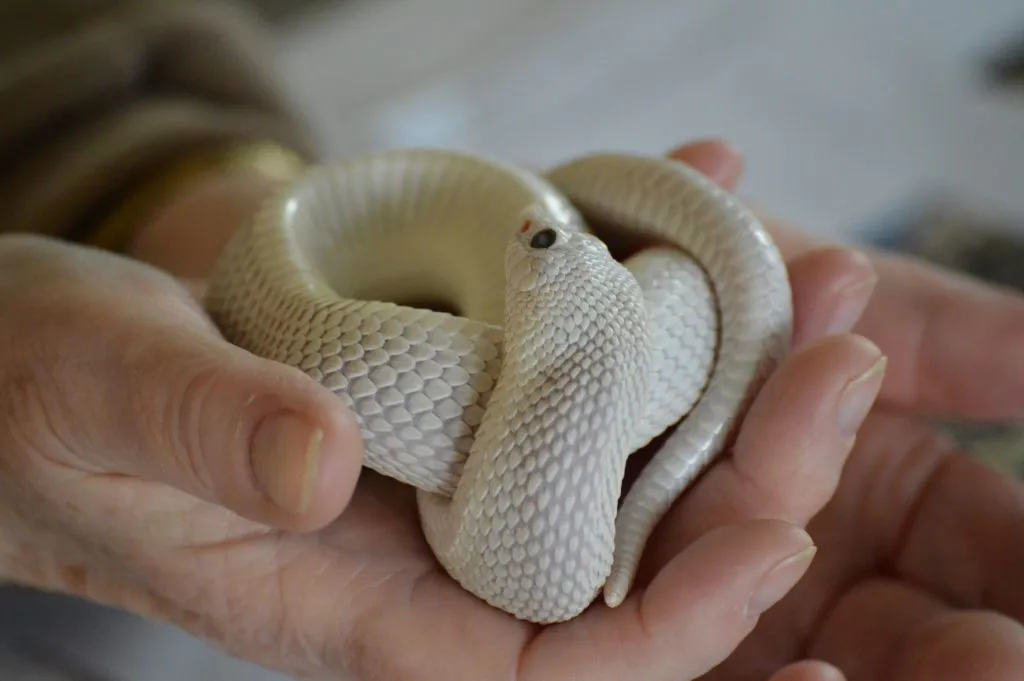
Hognose snakes are diurnal and prefer to be active during the day. Let’s discuss some most common behaviors of Hognose Snakes below:
- Hognose snakes are not typically aggressive, and bites are extremely rare.
- They tend to spend most of their time looking for
food , basking in the sun, or hiding in burrows. - They can also be found in grassy areas like fields or gardens as well as dense forests.
- Hognose snakes feed mainly on small invertebrates but will also eat lizards and frogs.
- Hognose snakes are not very social creatures, preferring to live alone and only coming together during mating season.
- Hognose snakes make excellent pets due to their laid-back demeanor and generally friendly behavior.
- They require very little maintenance, making them a great choice for those who are looking for an easy-to-care-for pet snake.
However, it is important to remember that they can still bite if they feel threatened, so always approach with caution and respect.
What To Do if a Hognose Snake Bites You
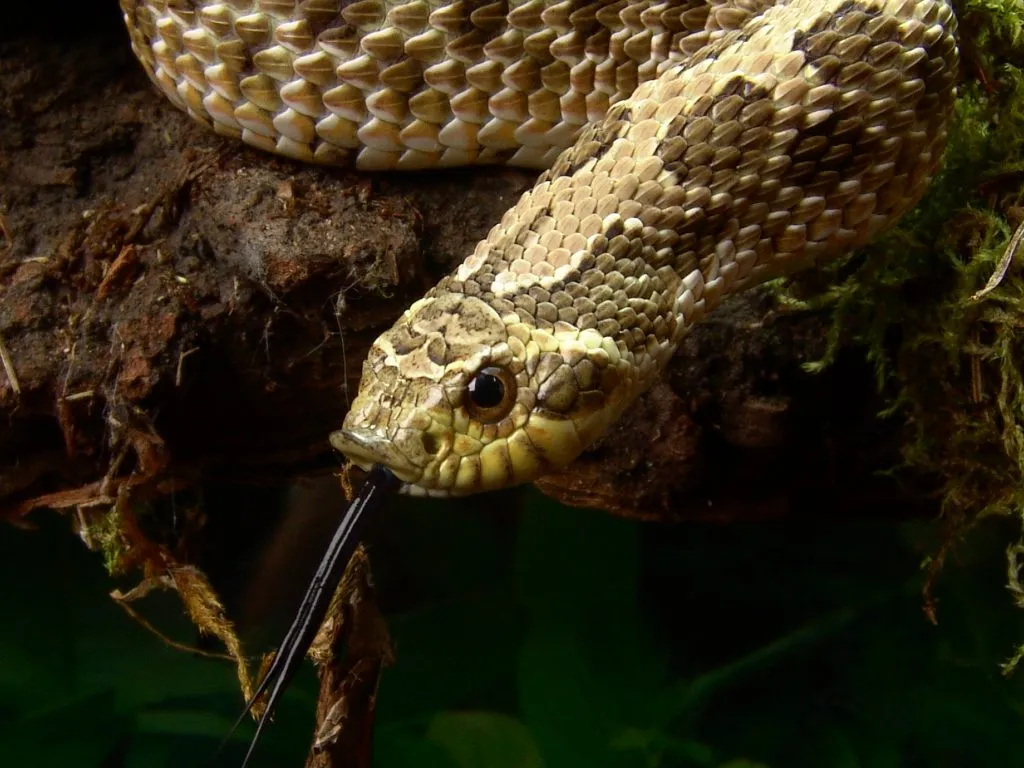
If you are unfortunate enough to be bitten by a hognose snake, there are a few steps you should take right away:
- Remain calm and try to stay still: Moving around can cause the snake to latch on even tighter, so it’s important not to panic or pull away.
- Pour cold water over the area around the bite: By doing this, the snake will release its grip, and you will get a chance to move away.
- Clean the wound: Clean with soap and water, then apply an antiseptic.
- Seek medical attention if needed: Hognose snake bites are usually mild and don’t require medical treatment, but some individuals may have reactions to the venom or infections from the bite.
- Monitor the area: If you notice any swelling or signs of infection over the next few days – seek medical attention immediately.
Remember that the Hognose Snake is just trying to protect itself, and if given a chance. In general, bites from Hognose Snakes are relatively mild and don’t require medical attention.
Do Hognose Snake Bites Hurt?
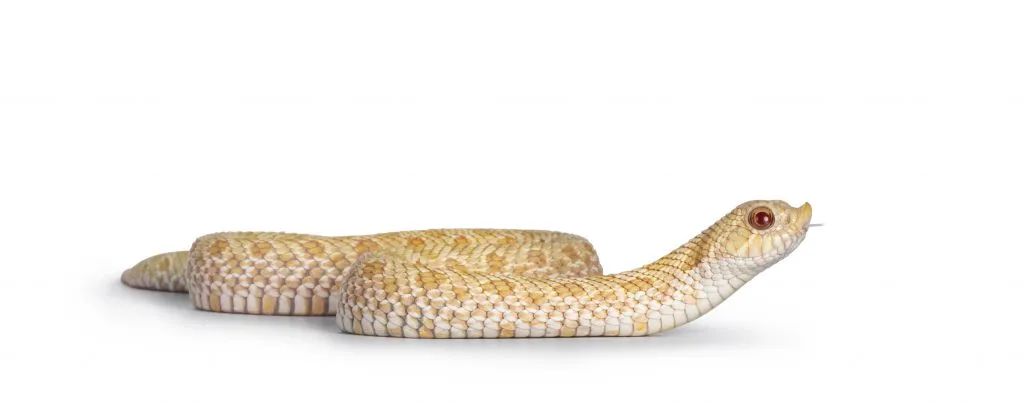
Hognose snake bites don’t usually cause a lot of pain. The bite can be uncomfortable, but it is typically not as severe as other types of venomous snakes.
The pain associated with a hognose snake bite is minor and painful, like a bee sting. The Hognose snake venom is mild, and its fangs are not long enough to penetrate deeply into the skin.
If you are allergic to bee stings – you may experience more discomfort and swelling than usual. However, the effects of the bite subside very quickly.
How Often Hognose Snake Bite
Bites usually occur during two main times:
- When a snake is mishandled or held too tightly.
- When it is in the process of shedding.
When handling your pet snake, be sure not to squeeze too tightly or startle the animal, and only handle them for brief periods of time.
Hognose Snake Bite Symptoms
If bitten by a hognose snake, symptoms may include
- Redness and swelling of the affected area
- Blister formation
- Erythema
- Ecchymoses
- Edema
These symptoms should fade within a few hours or days. In rare cases, the bite may be accompanied by nausea, vomiting, and dizziness. If this occurs, seek medical attention immediately.
Are Hognose Snakes Venomous?
Hognose snakes are mildly venomous. They lack the necessary anatomy to produce and inject venom. Though their saliva does contain mild toxins, these substances do not meet the definition of venom and can usually only be felt if the snake latches onto its victim.
The mild toxins in hognose saliva are produced by Duvernoy’s gland and should not cause any serious harm. As a result, it is generally safe to handle or be around these animals.
Though they can bite if provoked, hognose snakes are no more dangerous than any other non-venomous snake species.
Do Hognose Snakes Have Teeth?
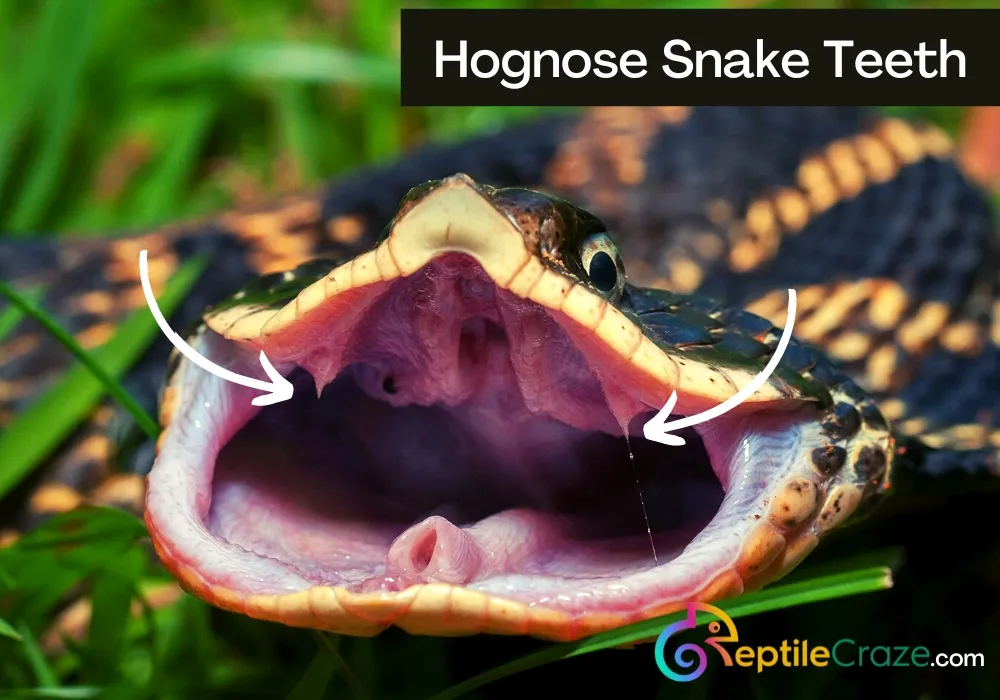
Hognose snakes possess a pair of enlarged teeth located at the back of their upper jaw. Utilized to secure prey and protect themselves from danger, these teeth are sharp enough to cause only mild irritation when they bite.
Hognose Snake Fangs
The fangs on hognoses are not like typical venomous reptiles as they reside in the rear portion of their mouth and are used mainly for consuming eggs, amphibians, and small mammals. Consequently, the pain caused by their bite is nominal.
Hognose Snake Bite Treatment
If a hognose snake bites you, clean the wound, and apply antiseptic ointment to reduce the risk of infection.
- In most cases – no further treatment is necessary, and the symptoms should subside within a few hours or days.
- In rare cases – a doctor may prescribe antibiotics or anti-inflammatory medications to reduce the risk of infection.
- In the event of an allergic reaction – antihistamines and steroids are recommended, such as epinephrine or corticosteroids.
Note: Administration of antibiotic prophylaxis is not recommended unless secondary infection occurs.
Prevention Tips To Avoid Being Bitten by a Hognose Snake
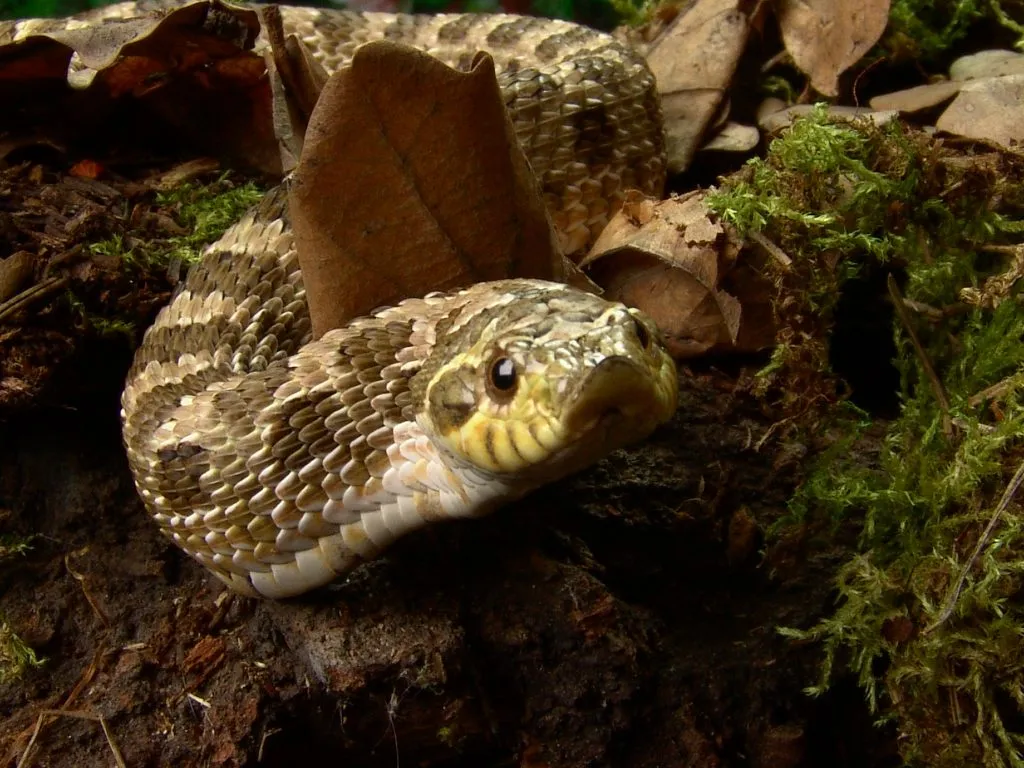
The best way to avoid being bitten by a hognose snake is to handle them with caution and respect. Here are some tips to help you protect yourself when handling a hognose snake:
- Use appropriate snake handling tools, such as tongs or hooks when trying to move a hognose snake.
- Wear protective gloves while handling the hognose snake to help protect your hands from getting bitten.
- Always be aware of where the head of the hognose snake is located and avoid putting your hands near it or in its path.
- Pay attention to the body language of the hognose snake, as it may give clues that it is feeling threatened and may strike if provoked.
- Do not attempt to handle a hognose snake if you are uncomfortable with doing so; always seek professional help if you are not sure how to handle them safely.
- Do not attempt to pick up a hognose snake that is coiled or in the strike position, as this can increase your chances of getting bitten.
- Always treat a hognose snake with respect and do not handle them roughly or in any way that may cause them distress.
- Never handle a hognose snake that is in the process of shedding. They are more sensitive and prone to biting at this time.
- Do not handle a hognose snake right after it has eaten, as it may be more aggressive and less tolerant of handling. Wait several hours before attempting to handle them again.
- Make sure to always supervise children when they are handling a hognose snake, as their small size can make it more difficult for them to assess the situation correctly and avoid getting bitten.
Following these tips will help you avoid being bitten by a hognose snake, and enjoy your time with this fascinating reptile in safety!
Final Thoughts
Hognose snake bites are usually not dangerous and do not cause much pain. Still, it can be a nerve-wracking experience! In most cases, no special medical treatment is necessary – the symptoms should dissipate in an hour or two.
But if you want to take extra precautions, cleaning the wound and applying an antiseptic balm is a good idea.
If you feel uncomfortable or uneasy at any point, it’s best to seek professional medical assistance. To avoid being bitten in the first place, handle them cautiously with appropriate
Have you ever been bitten by a hognose snake before? What did you do in that situation? Share your experience with us in the comments below! We’d love to hear your stories!
- Eastern Rat Snake: Nature’s Pest Control and Fascinating Reptile - September 20, 2024
- Eastern Racer: The Fast and Agile Snake - September 19, 2024
- The Eastern Indigo Snake: The Majestic, Non-Venomous Hunter of the Southeast - September 18, 2024
